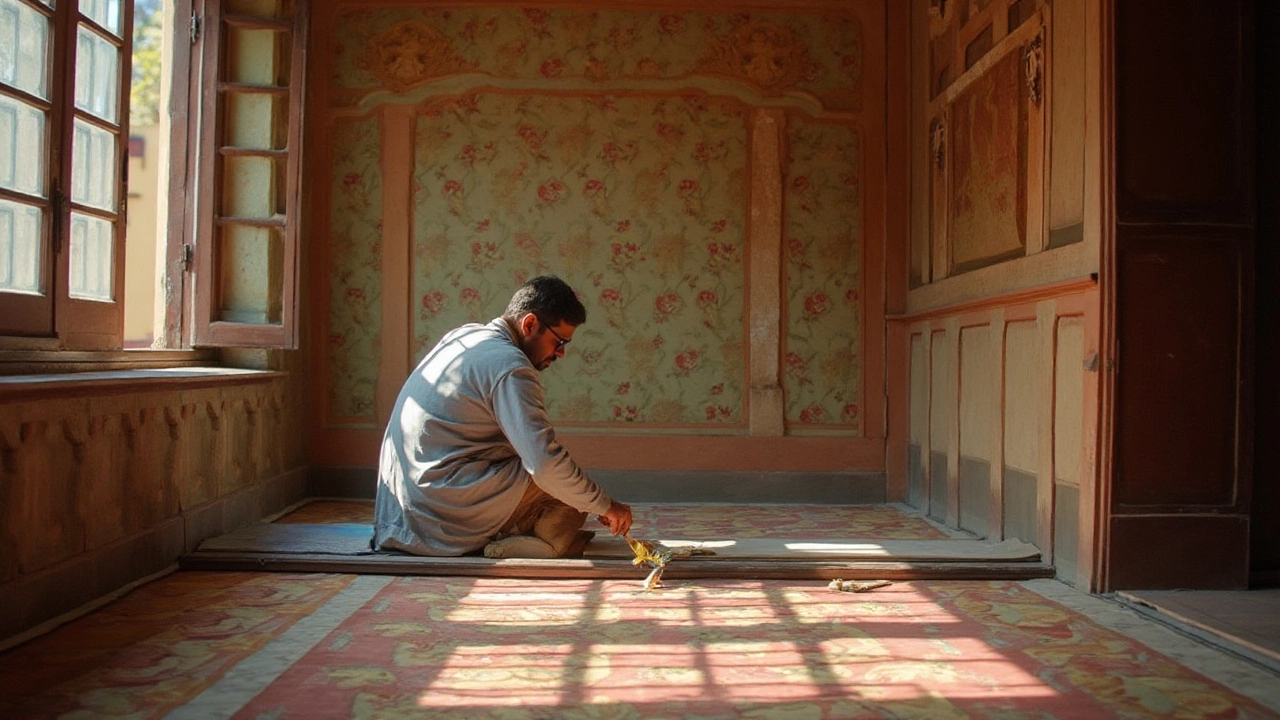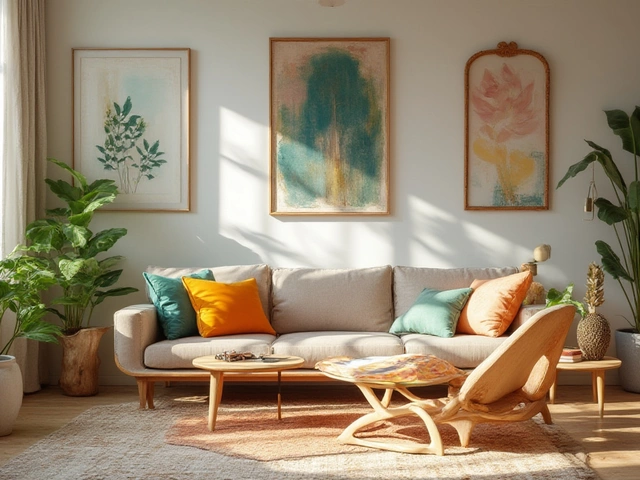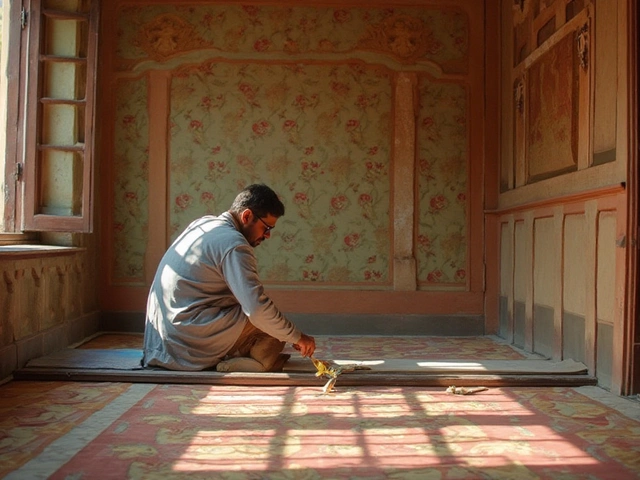Wallpaper has made a remarkable comeback in the world of interior design, capturing the attention of homeowners with its vast array of patterns and textures. However, before committing to this decorative trend, it's important to understand the potential drawbacks.
Bringing a room to life with wallpaper isn't as straightforward as it might seem. While the appeal of a beautifully patterned wall is undeniable, many challenges accompany the choice. These can range from installation difficulties to long-term maintenance issues that are anything but charming.
Moreover, as with anything style-related, what once felt chic can quickly become outdated, leaving you with walls that don't resonate with current trends. Understanding these disadvantages will arm you with the knowledge to make a more informed decision about whether wallpaper is the right choice for your home.
- Installation Challenges
- Durability Concerns
- Style and Trend Limitations
- Maintenance and Repair Difficulties
- Environmental and Cost Implications
Installation Challenges
Embarking on decorating your walls with wallpaper can swiftly reveal the first hurdle: installation. Successfully applying wallpaper is both an art and a science, demanding precision and patience. For starters, the surface preparation is crucial. Often, walls need to be meticulously cleaned and possibly smoothed out if they're uneven or textured, a process that is both time-consuming and labor-intensive. Poor surface prep can lead to bubbling, peeling, or an unsightly finished product, none of which justify the effort put in.
Moreover, the very act of hanging wallpaper requires skill. It’s not just about aligning the edges seamlessly. Patterns must be matched with precision, which becomes increasingly complex with intricate designs. A centimeter off can disrupt the entire aesthetic. It's no surprise many people choose to hire professionals, which adds a significant cost to the project. This additional expense can be unexpected for those enticed by wallpaper as a simple DIY endeavor.
It's also important to consider the limitations posed by different wallpaper materials. For instance, traditional paper-based wallpapers can tear easily and are particularly unforgiving during installation if stretched. Vinyl wallpapers, on the other hand, are a bit more resilient but come with their own set of challenges, such as the potential for shrinkage as the adhesive sets. With these factors in mind, the seemingly straightforward task of hanging wallpaper often becomes a technical journey.
"Wallpaper installation isn't just about slapping paper on the walls," says interior design expert Samantha Mills. "It's a calculated method that requires experience, especially with non-standard rooms where alignment can be tricky."
An often-overlooked aspect is tackling corners, windows, and door frames, which can break the flow of even the most striking wallpaper pattern. Each interruption is a potential point for misalignment, demanding cuts that must be precise to maintain continuity. Mastering these nuances takes practice, and for many, achieving that level of expertise on a first attempt is daunting.
Another complication involves removing old wallpaper, which can be arduous and messy. It's seldom a smooth process and often unveils additional wall imperfections that need addressing. This shows that while home decor with wallpaper seems appealing, the reality of its installation—and potential reinstallation—isn't always straightforward.
The Tools of the Trade
Successful wallpaper installation is not just about technique but also about having the right tools on hand. From smoothing tools and sharp blades for trimming to the correct adhesive type for the specific wallpaper, each plays a critical role. Substandard or mismatched tools can often make or break the project. For instance, the wrong adhesive might not support the wallpaper's weight, leading to a sagging finish and a lot of frustration. People often underestimate this aspect, only to realize its importance mid-project, leading to unnecessary delays and added costs.
Given these numerous challenges, even avid DIY enthusiasts sometimes find that wallpaper installation may not be as budget-friendly or simple as initially anticipated. So, before diving headfirst into choosing the perfect wallpaper design, it's wise to consider whether you're ready to tackle these installation hurdles or if calling in a professional might just save time and sanity in the long run.
Durability Concerns
When considering wallpaper disadvantages, durability often tops the list. Unlike paint, which can easily withstand scuffs and scrapes, wallpaper is particularly susceptible to physical damage. This fragility becomes more pronounced in high-traffic areas such as hallways or bustling family rooms, where walls often endure the brunt of daily wear. Children's rooms, too, may see the effects of exuberant play, with wallpaper becoming a canvas for artistic ventures or marks from imaginative adventures. Anytime sharp objects or heavy furniture is involved, the risk of tearing the wallpaper increases, suggesting that durability truly may not be its strong suit.
Moisture presents another threat. In places like bathrooms or kitchens where humidity fluctuates, wallpaper issues can manifest in the form of peeling edges or bubbling surfaces. These effects are not only unsightly but can also indicate underlying damage such as mold growth when permeating dampness remains unchecked. To curtail such scenarios, special types of wallpaper like vinyl might be used; however, these alternatives tend to lack the range of textures and designs found in traditional options. The trade-off between aesthetically pleasing and waterproof might be a hard pill to swallow for many who are keen on achieving a specific look.
Quality varies, and not all wallpaper is created equal. Some materials are more resilient, crafted to withstand the vagaries of family life. Yet, even the high-end options cannot entirely escape the ravages of time. Over the years, UV exposure can lead to fading, leaving walls looking tired. This makes regular maintenance an inevitable chore, sometimes necessitating replacement sooner than envisaged. High humidity and exposure to direct sunlight can both shorten the lifespan of wallpaper significantly. Creating a lasting impression means being prepared to refresh it periodically, something many homeowners may not initially consider.
"The key to wallpaper longevity is understanding the limitations and preparing adequately. It’s essential to match the type of wallpaper to the specific conditions of the room," as noted by Sarah Richardson, a renowned interior designer known for her practical yet stylish home solutions.
Different grades of wallpaper also factor into durability. Non-woven wallpapers are often recommended for their robust nature, especially in environments that might challenge other types. Meanwhile, those made from paper might struggle with the pull of time, demanding more care and attention. A strategic choice in material can save both time and money in the long run, but it's worth acknowledging that not all decor needs will align well with the most durable options. This balance between function and design creates a complex decision-making process for anyone considering wallpaper for their home's aesthetics.
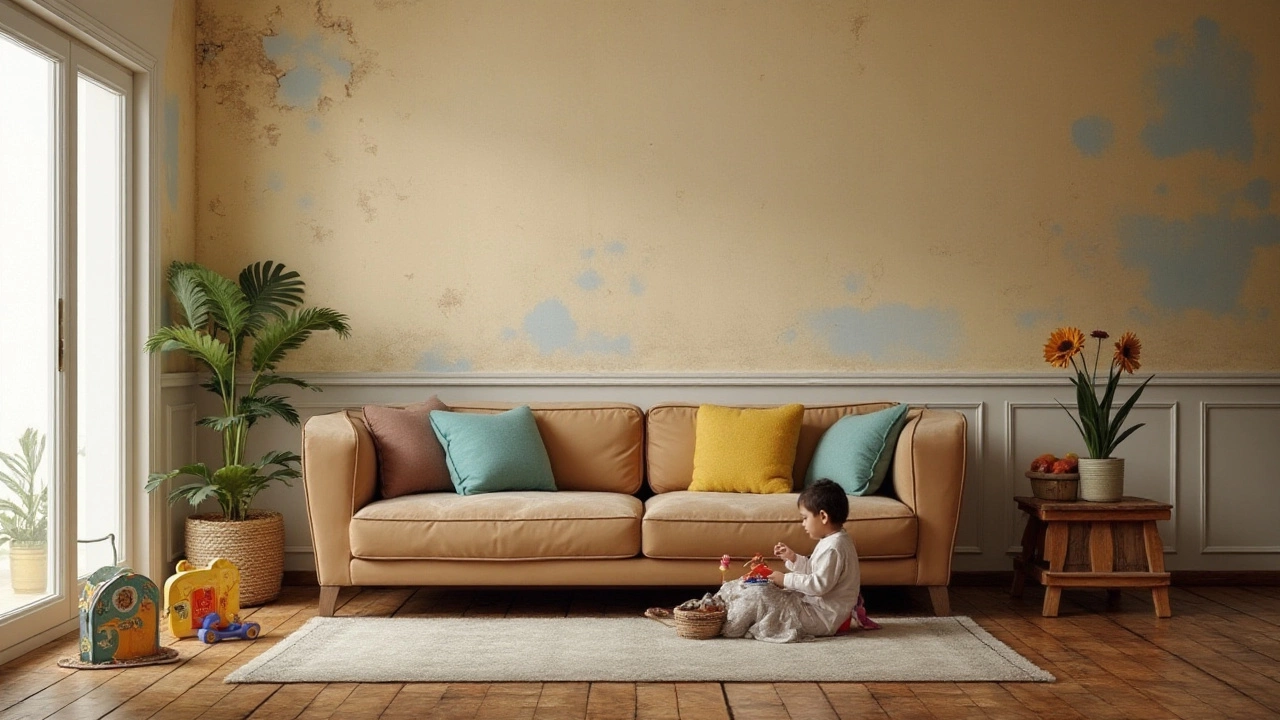
Style and Trend Limitations
Embracing wallpaper as a key element in your interior design can be a double-edged sword when it comes to style and trend. While it can transform a blank room into a vibrant tapestry of color and design, the risk lies in how quickly a popular pattern can become passé. Interior design tends to evolve rapidly, and what was considered chic and modern last year might not hold the same appeal today. Just like the fast-paced world of fashion, home décor can seem to have a sell-by date, which can turn an eye-catching feature wall into a dated eyesore.
Choosing the right wallpaper can be a gamble much like playing the stock market—sometimes you win, but many times, trends shift too quickly to catch up. It’s essential to have a keen eye for timeless styles that can endure the unpredictable tides of fashion. Amid these considerations, the pressure increases when the choice is meant to be a long-term one. Unlike paint, changing wallpaper isn't as simple as buying a new can and starting over. It’s a significant effort that involves stripping, prepping, and reapplying, often necessitating professional help.
Another factor to consider is how certain designs can dictate the overall vibe of your home environment. A bold pattern or vibrant color scheme can take center stage in a room, which reinforces the style but limits flexibility in redecorating other elements. This can narrow the opportunities for experimenting with new looks or incorporating other trends. In some cases, residents might find themselves constrained in terms of how they can further personalize their space.Wallpaper issues are not always apparent during the initial stages of selection, often emerging only once the dust has settled, both literally and figuratively, after a complete installation.
"The right wallpaper can turn a space into something extraordinary, but it’s crucial to consider the longevity and adaptability of patterns," says renowned interior designer Sarah Richardson. "Decor trends can be fleeting, but good design endures."
Homeowners are often challenged to strike a balance between personal taste and the practical durability of designs that may have larger implications for resale value or future modifications. Trends can be hard to anticipate, with some styles experiencing unexpected resurgences while others fade away quietly. This unpredictability makes it critical to assess whether a design’s popularity is ephemeral or if it’s rooted in qualities that allow it to withstand changes in consumer tastes.
In conclusion, while the allure of wallpaper—especially with its broad availability in captivating designs—offers memorable opportunities for enhancing a room's ambiance, the very nature of these trends may pose a significant hurdle. It might be helpful to weigh these outcomes against the flexibility and potentially increasing appeal of painted walls, which, albeit less decorative to some, provide the subtlety required for frequent style transitions.
Maintenance and Repair Difficulties
The charm of expertly applied wallpaper can be a glorious sight, yet like many beautiful things, it requires vigilance and care to maintain. For many homeowners, the realization that wallpaper isn't a set-and-forget situation can come as a surprise. Unlike paint, which might only need an occasional touch-up every few years, wallpaper requires its own maintenance regime to keep looking fresh and vibrant. One of the key disadvantages is its susceptibility to damage from daily life. Kids playing, dogs brushing against the walls, or even moving furniture can lead to scruffs and tears in what appeared to be a pristine landscape of color and design.
In particular, moisture and humidity are notorious adversaries to wallpaper, causing it to peel or bubble over time, especially in areas like bathrooms or kitchens. This problem can become especially apparent in homes without proper ventilation. Repairing such damage isn’t as simple as applying another coat, as you might with paint. Instead, it often necessitates meticulous patching, which, if not done perfectly, can stand out starkly against the rest of the wall. Depending on the extent of the damage, you might need to replace entire strips of wallpaper, which invariably leads to a mismatch if the original wallpaper is no longer in production.
Moreover, think of those blemishes or stains that seem to mysteriously appear from nowhere. Everyday life doesn’t always go smoothly, and sometimes things spill or leave marks. Unlike a painted surface where a gentle wipe might suffice, stains on wallpaper tend to be more stubborn. Cleaning solutions might disrupt the print or pattern, leaving a bigger mess than you started with. Not to mention, even a well-matched scrub can sometimes lead to fading, not uniform with the untouched surrounding areas. As time passes, these issues might lead to more substantial areas needing complete re-wallpapering.
There's also the question of time. Wallpaper issues don't seem quite so pressing until they accumulate, and suddenly, a weekend project is on your hands. In seeking professional help, you might find yourself at the mercy of the contractor’s schedule, which might not be as immediate as you'd like. Not to mention the cost implications of professional repair, which can add an unforeseen burden on your wallet.
"Wallpaper maintenance often catches homeowners off guard because it's a commitment to steady care," says interior design expert Linda Mendelson in a recent interview on design trends.
Perhaps not surprisingly, innovation in wallpaper technology has introduced products claimed to be more resilient or easier to maintain. Yet, these benefits come at a premium, steering one’s budget farther north. Before selecting wallpaper, you should consider what lifestyle factors might influence your walls’ longevity. There's certainly a sense of pride and remarkable transformation that wallpaper offers to a home, but being realistic about its upkeep is essential.
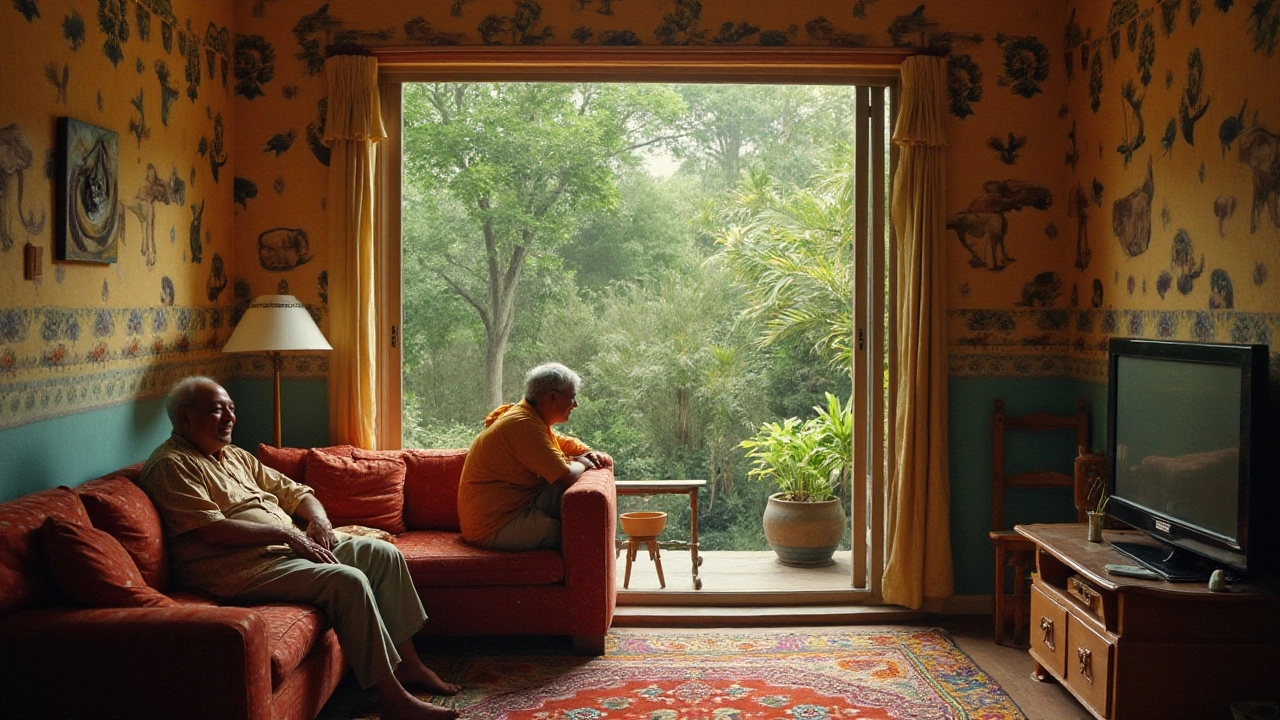
Environmental and Cost Implications
When considering the addition of wallpaper to your living space, it's critical to understand the environmental impact and cost implications associated with this interior design choice. Wallpaper isn't just a material that decorates walls; it's a product of complex manufacturing processes that involve raw materials, copious amounts of energy, and chemical treatments. Many wallpapers are derived from vinyl or other plastics, which are not inherently sustainable. These materials can release volatile organic compounds (VOCs) into your home, impacting indoor air quality and potentially affecting health. Even paper-based options, although more eco-friendly, often involve intensive resource use in their production—from the harvesting of trees to the chemicals used in their printing.
On the cost front, the initial price tag of wallpaper can sometimes appear deceptively low compared to a traditional paint job. However, specialized wallpaper products and those with unique textures or custom designs can significantly escalate expenses. Then, there are installation costs to consider, which usually require professional assistance. Attempting to apply wallpaper yourself could lead to material waste if not done right the first time. According to the Home Improvement Research Institute, wallpaper installation can range from $400 to $1,200 per room, depending on the complexity and quality of materials. "The upfront savings people often assume with wallpaper may not hold true when factoring in associated costs," highlights an article in the Journal of Green Building.
Another aspect to weigh is the longevity and maintenance of wallpaper. Unlike paint, which can be touched up or easily reapplied, wallpaper repair demands replacement of entire sections, thus tangling you in additional expenses. Environmental considerations also play a part here, as many wallpapers are not easily recyclable and contribute to landfill waste when disposed of. Today’s eco-conscious consumers might opt for more sustainable choices like wallpapers made from recycled content, using water-based inks and adhesives. While these green alternatives may have a higher upfront cost, their reduced environmental impact might offer peace of mind. If you're looking to minimize both environmental and financial strain, conducting research and perhaps consulting with an interior design professional knowledgeable about sustainable options could be worthwhile steps in your journey.
